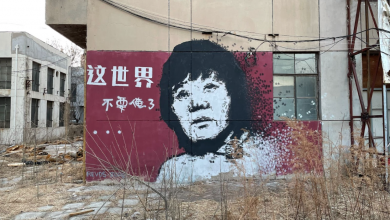How the Healthcare Industry is Riddled with Sexism

Image: “The City” by Henry Lawford via Flickr / CC BY 2.0.
Last month, the Center for Disease Control (CDC) released its monthly Vital Signs report with an infographic advising women to refrain from drinking if they are not using any form of oral contraception. While the advice was well-intended in its aim to reduce the number of newborns with fetal alcohol syndrome (FAS), it ignited controversy among many women for its additional implications.
The report stated that for any woman, “drinking too much” can lead to an increased risk of “injuries/violence”, “sexually transmitted diseases”, and “unintended pregnancies”. There was no adjacent report that warned men of the consequences of drinking too much, such as an increase in the likelihood of physically and/or sexually abusing women. Once again, women were subjected to victim-blaming; this time, in a national health report.
The wording of the CDC’s report goes beyond concerns of FAS; it insinuated that it is a woman’s burden to avoid any sexual or physical abuse that could cause an unplanned pregnancy, and the best way to do so is to stop drinking unless all other precautions have been met. It also suggests that in having those few extra drinks, women are arguably accepting such risk and inviting such consequences.
The CDC has since removed and altered the graphic in response to the backlash. However, the original advice was framed in such an irresponsible, misguided way that even with the new changes there’s no telling how much impact the ill-phrased medical advice has left on women of all ages.
Even worse, this isn’t the first time the CDC has represented a woman’s body as a walking liability. In 2006, a similar report told all women of reproductive age to treat their bodies as “pre-pregnant”, advising them to take vitamin supplements, stop smoking, maintain a healthy BMI, and control chronic illnesses such as asthma or diabetes.
The CDC may mean well in attempting to promote a healthy lifestyle in its 2006 report, or in reducing the number of newborns with FAS this year. However, in both instances women are seen solely as “baby-making machines” who must shape most of their pre-menopause lives around avoiding substances and habits that do not prepare their bodies for motherhood.
Pregnancy,”pre-pregnancy”, and STDs are not the only topics where sexism is observed in the health industry. Nor is the CDC the only institution that circulates such sexist claims. In fact, there are many examples of the way the health industry fails women that are both legitimate threats to their health as much as they are threats to achieving equality.
The following are just a few examples of the numerous gender disparities in the health industry:
1. Clinical trials
Women (and people of color) have long been underrepresented in clinical trials for drugs they use as patients. The consequences of such exclusion or underrepresentation are that “women are forced to accept second-class health care almost every time they receive health services.”
2. Response to pain
Medical professionals, are much more likely to dismiss or downplay a woman’s expression of pain than a man’s. Especially when it comes to chronic pain and illness, multiple studies have shown that men are more likely to be tested and treated for physical and neurological conditions, whereas similar symptoms for women are treated as psychological and social problems.
This dismissal by physicians leads to increased difficulty in receiving the proper medical care, as women are often diverted from consideration of surgery, medication, pain clinics, etc., prolonging their pain and illnesses.
3. Prescription
Women are less likely to receive narcotic medications to deal with intense post-op pains yet more likely to receive sedative drugs.
4. Appearance
More attractive women are more likely to receive attentive care – even if the diagnostics are ambiguous – than less attractive women.
5. Social Maladies
Social maladies, such as the cumulative effects of harassment, objectification, and paranoia, are also inextricable causes of higher rates of anxiety and depression among women. Tying it back to the CDC’s recommendations, these effects are unsurprisingly even more severe among those who have been sexually abused.
These instances of sexism reveal how much the health industry has internalized gender bias. This internalization of bias not only causes disproportionate mental and physical health risks for women, but if left unchallenged, reinforces sexism. The outlook is even bleaker for minorities, especially women of color, as the effects of racial stereotypes pose even more of a threat to physical and mental security.
Awareness of this gender bias in the healthcare industry is important on a personal and social level. As an individual woman, you should know about the type of medical help you may or may not be receiving. Acknowledging this medical bias can make us better consumers of health care and improve our chances of being treated properly. That being said, it shouldn’t be our duty to accept the inconvenience of sexist practice; it is truly up to the health industry to be making concerted efforts to close the evident gender gaps so all women can have access to fair medical advice.




